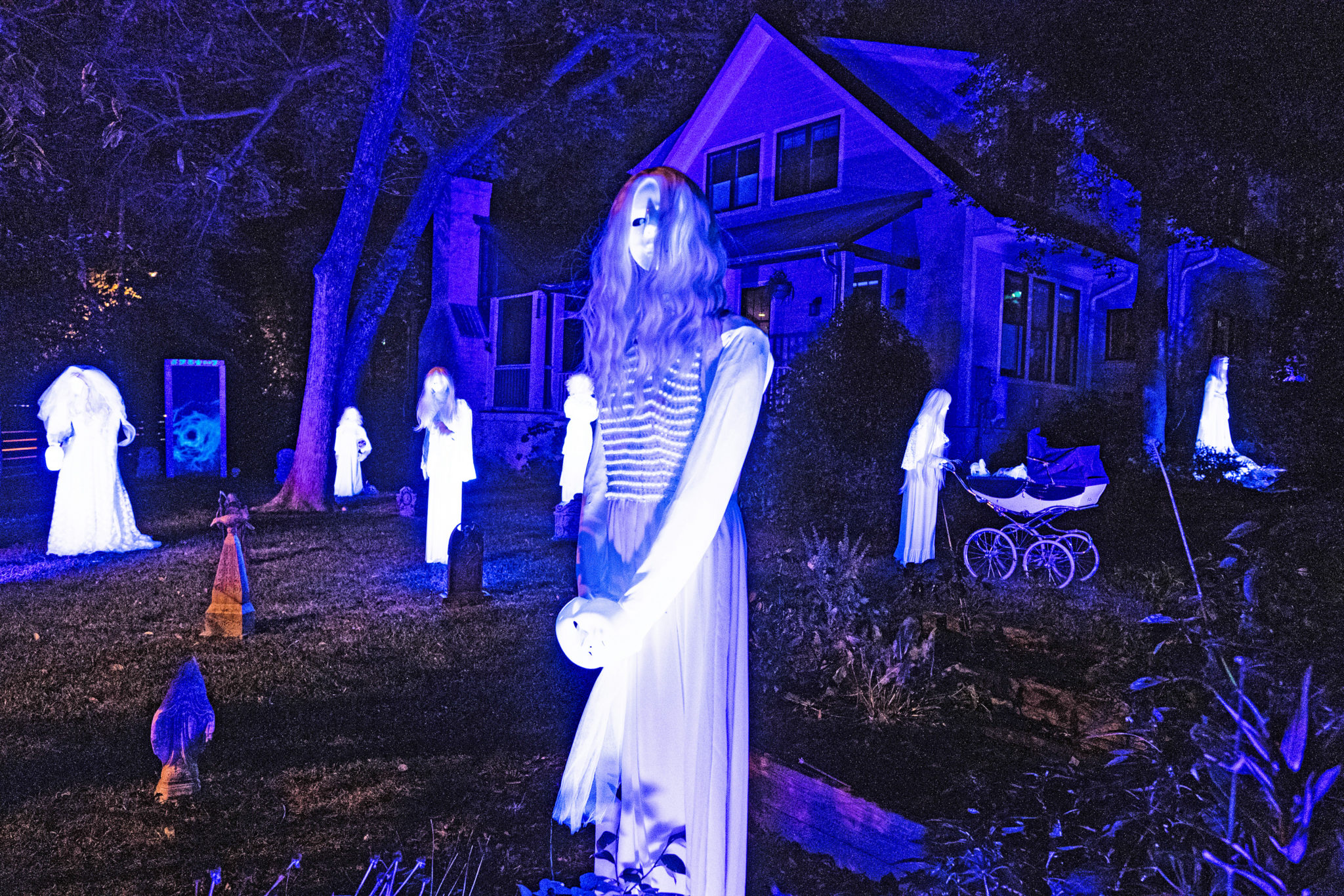Alexandria’s Favorite Halloween Celebration Is Back!

Alexandria, VA – With a neighborhood full of decorated houses and a parade shutting down Main Street, Halloween is Del Ray’s biggest holiday. Here are five ways to celebrate:

- The Del Ray Halloween Parade: The main event, the 26th Annual Del Ray Halloween Parade, takes place on Sunday, October 30, at 2 pm along Mount Vernon Avenue. The parade starts at the intersection of Mount Vernon and E. Bellefonte Avenues and ends with a family-friendly party at the Mount Vernon Recreation fields. Thanks to the Del Ray Business Association, The Jen Walker Team, Your Dogs Best Friends, and Bobi & Ellen, Homes of Alexandria, for sponsoring this event!
- Show Off Your Creativity: The elaborate entries in the Del Ray Halloween Parade’s annual stroller contest rival the creativity and design of parade floats — and are often a family-wide, block-wide, or even business-wide effort. And in a neighborhood where pets are family, it wouldn’t be Halloween in Del Ray without a pet costume contest. Both contests will return to in-person judging; check-in takes place at the intersection of Mount Vernon and E. Bellefonte Avenues.
- Get In The Spirit: For over 30 years, residents and businesses have gone all out decorating for Halloween, competing for bragging rights for the best-decorated house and business. Get in the Halloween spirit by visiting the top ten house nominees; the map will be available the week before the parade. Note: Nominations for the Best Decorated House Contest must be received by 12 pm on Sunday, October 23; complete details on entering are available at visitdelray.com.
- Give Back: Help ensure that each child in our community has a happy Halloween. The Del Ray Business Association is partnering directly with local nonprofit organizations serving children, giving community members the opportunity to purchase a costume for a child in need. To make a donation, visit visitdelray.com.
5: Nightmare On Main Street: Visit Del Ray’s latest themed pop-up bar, Nightmare on Main Street, presented by HomeGrown Restaurant Group. The pop-up, located at 2312 Mount Vernon Avenue (most recently The Tiki Bar), gets in the Halloween spirit with spooky decorations and a ghoulish cocktail menu.
For complete details on Halloween in Del Ray — including how to enter the best-decorated house or stroller and pet costume contests — visit www.visitdelray.com.

Dr. Lauren Fisher, president of the Del Ray Business Association, presented a check for $9,600 to Senior Services of Alexandria Board Chair Chris Wright and Executive Director Mary Lee Anderson. The funds were raised during DRBA’s Bands & Brews summer bar crawl, held in August. Over 1,500 bar crawlers participated in the event, which featured live music and drinks specials at 15 Del Ray restaurants. The next charity bar crawl, The Candy Cane Bar Crawl, is scheduled for Saturday, December 10.
Del Ray Docket
Now through October 29
The Return to Eating, Drinking, and Merriment Art Exhibit
Del Ray Artisans, 2704 Mount Vernon Avenue
Thursday 12–6 pm, Friday 12–9 pm, Saturday 12–6 pm, and Sunday 12–6 pm.
The Return to Eating, Drinking, and Merriment is a nationally juried ceramic cup and bowl show combined with a regional non-ceramic show organized around eating, drinking, and merriment. Celebrate the ways that food and drink bring together people and bring joy to our lives.
Oct. 8, 15, 22, and 29
Del Ray Farmers’ Market
The Pat Miller Neighborhood Square, located at the intersection of Oxford and Mount Vernon Avenue
8 am to 12 pm.
Named one of the top 10 farmers’ markets in the state! This year-round market features fruits and vegetables, meat, poultry, fish, eggs, cheeses, bread, fresh pasta, baked goods, cut flowers, and more.
Oct. 8.
Del Ray Vintage & Flea Market
Mount Vernon & East Bellefonte Avenue
9 a.m. to 1 p.m.
Find your treasure! Visit over 50 vendors at the Del Ray Psych & Wellness lot at 1900 Mt. Vernon Ave., plus the Salvation Army Corps lot across the street. For more information, visit www.delrayvintageflea.com.
October 15
Cinema Del Ray
Mount Vernon Recreation Center field
The movie starts at dusk
2701 Commonwealth Ave.
The Jen Walker Team presents a free, family-friendly outdoor movie starting at dusk.
October 30
Del Ray Halloween Parade
Along Mount Vernon Avenue
2 pm.
A favorite Del Ray tradition! All are welcome to march in the parade along Mount Vernon Avenue, which begins at E. Bellefonte. The event is free and open to all. For more information on entering the house decorating and costume contests, visit www.visitdelray.com.
ICYMI: YMCA Hosts Blood Drive in Partnership With the American Red Cross




